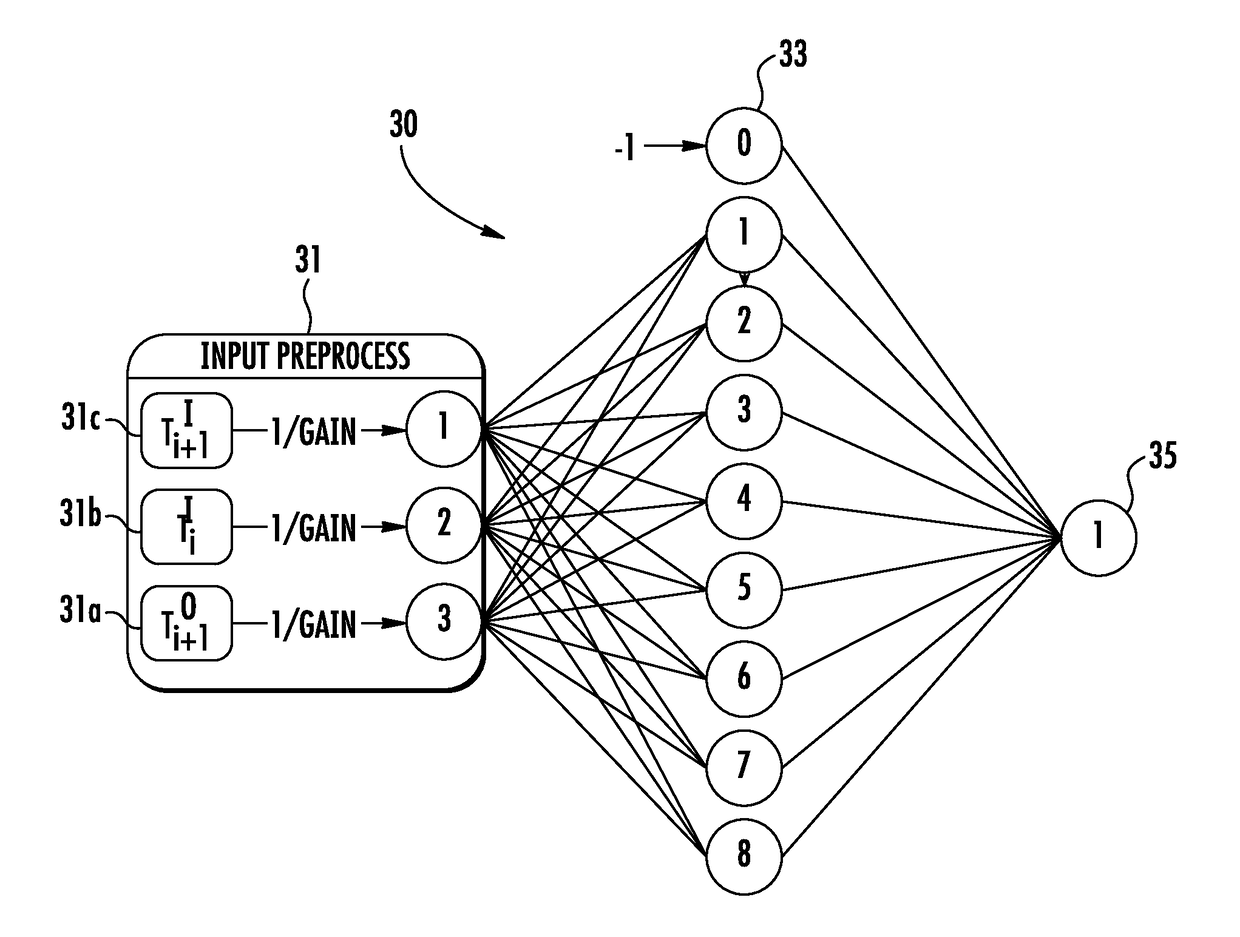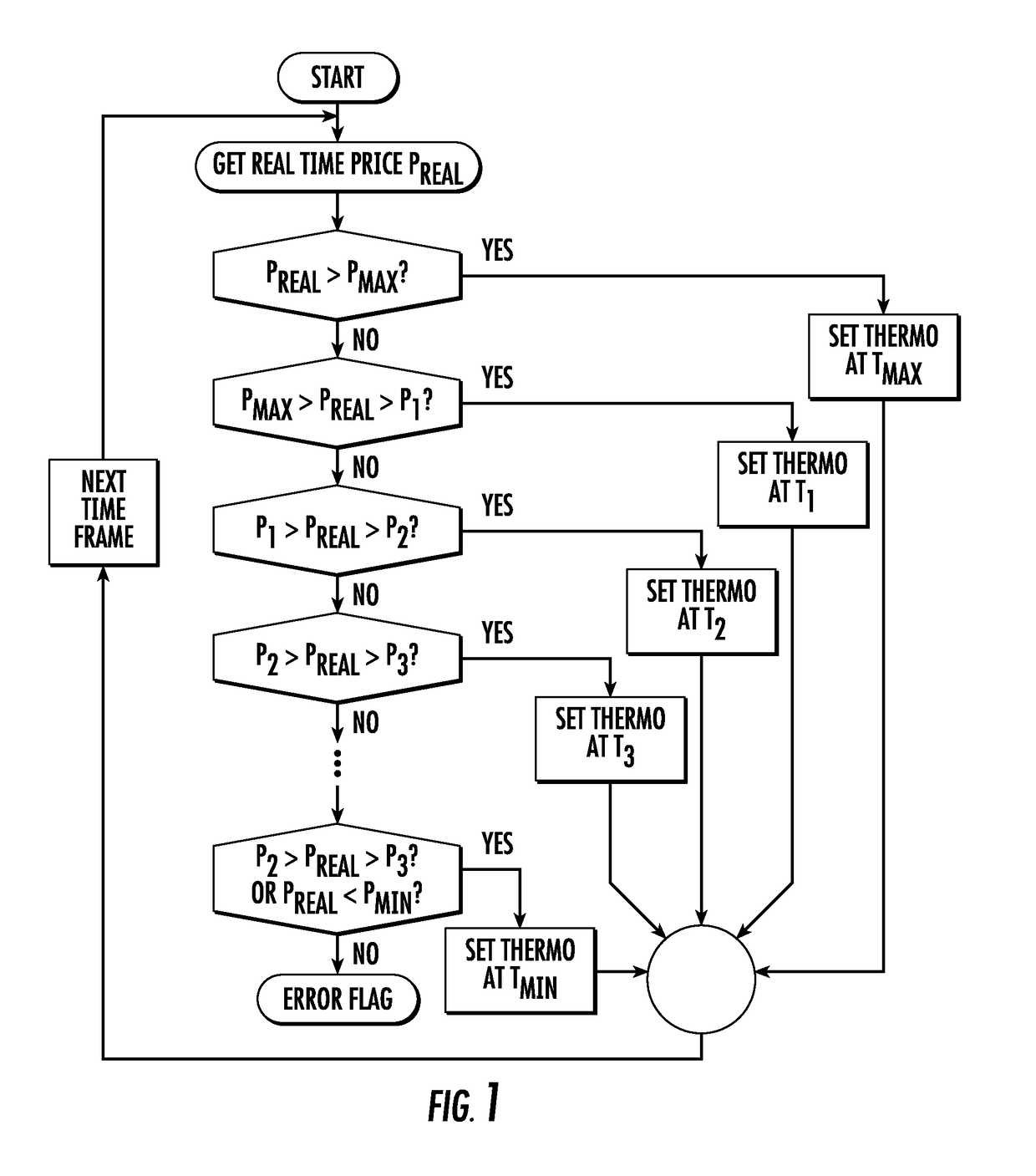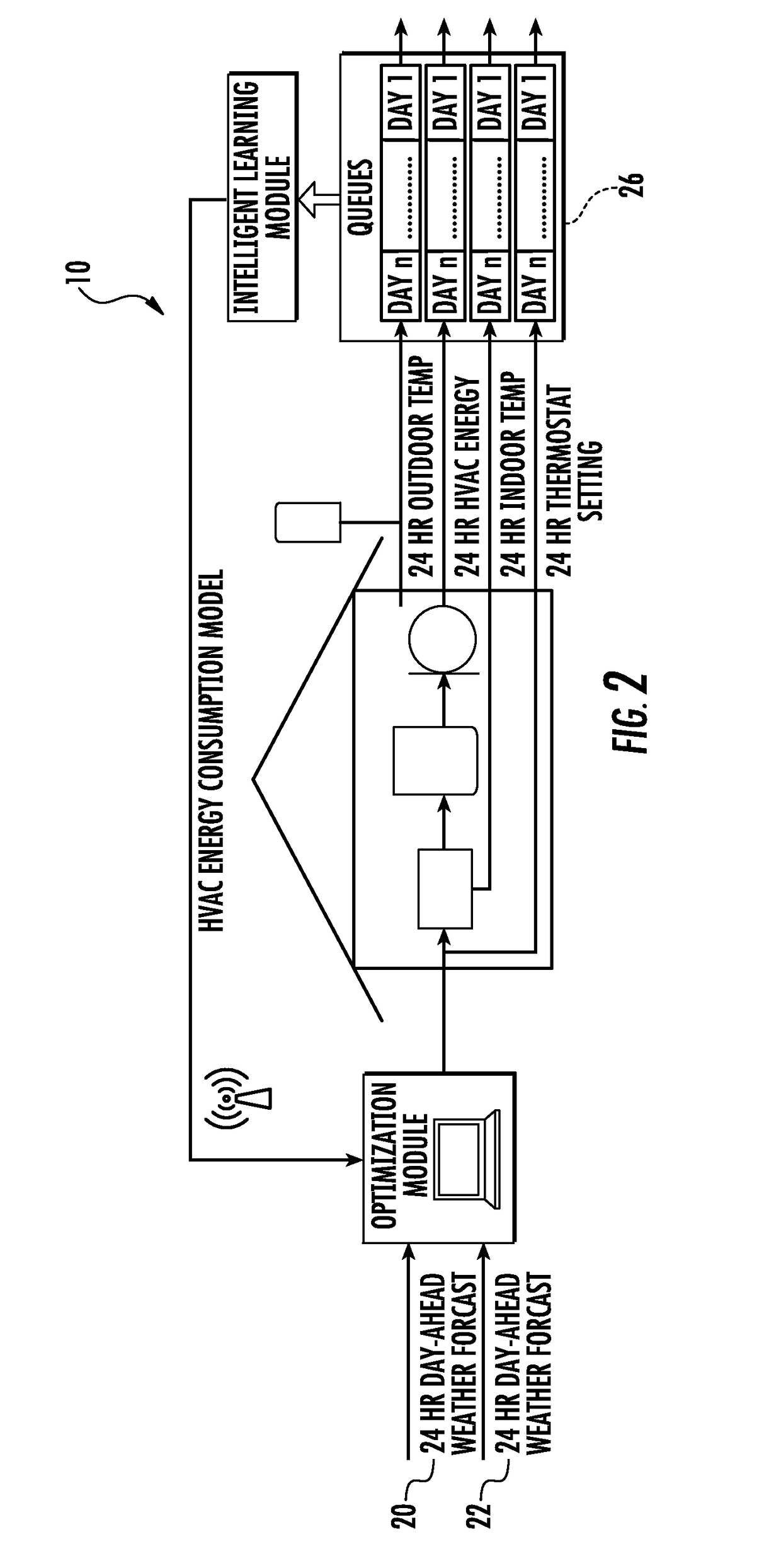Systems and methods for modeling energy consumption and creating demand response strategies using learning-based approaches
a technology of energy consumption and learning-based approaches, applied in adaptive control, heating types, instruments, etc., can solve the problems of inability to take advantage of low price periods to significantly pre-cool down a house, complicated actual energy consumption of a residential house, and inability of the algorithm to take advantage of low price periods
- Summary
- Abstract
- Description
- Claims
- Application Information
AI Technical Summary
Benefits of technology
Problems solved by technology
Method used
Image
Examples
Embodiment Construction
[0037]According to various implementations, a DR strategy system is described that can effectively model the energy consumption and generation of a house using a learning based approach that is based at least in part on actual energy usage data collected over a period of days. This modeled energy consumption may be used with day-ahead energy pricing and a weather forecast for the location of the house to develop a DR strategy that is more effective than prior DR strategies. One exemplary goal of the DR strategy system is to minimize net energy cost to the consumer. This goal may be met by reducing the amount of energy consumed during peak tariff time periods and identifying optimal time periods for storing, using, or selling energy generated from renewable energy sources associated with the house.
[0038]In particular, interactive learning mechanisms are disclosed that are configured to learn and model energy consumption of a residential house using substantially real-time measured or...
PUM
 Login to View More
Login to View More Abstract
Description
Claims
Application Information
 Login to View More
Login to View More - R&D
- Intellectual Property
- Life Sciences
- Materials
- Tech Scout
- Unparalleled Data Quality
- Higher Quality Content
- 60% Fewer Hallucinations
Browse by: Latest US Patents, China's latest patents, Technical Efficacy Thesaurus, Application Domain, Technology Topic, Popular Technical Reports.
© 2025 PatSnap. All rights reserved.Legal|Privacy policy|Modern Slavery Act Transparency Statement|Sitemap|About US| Contact US: help@patsnap.com



